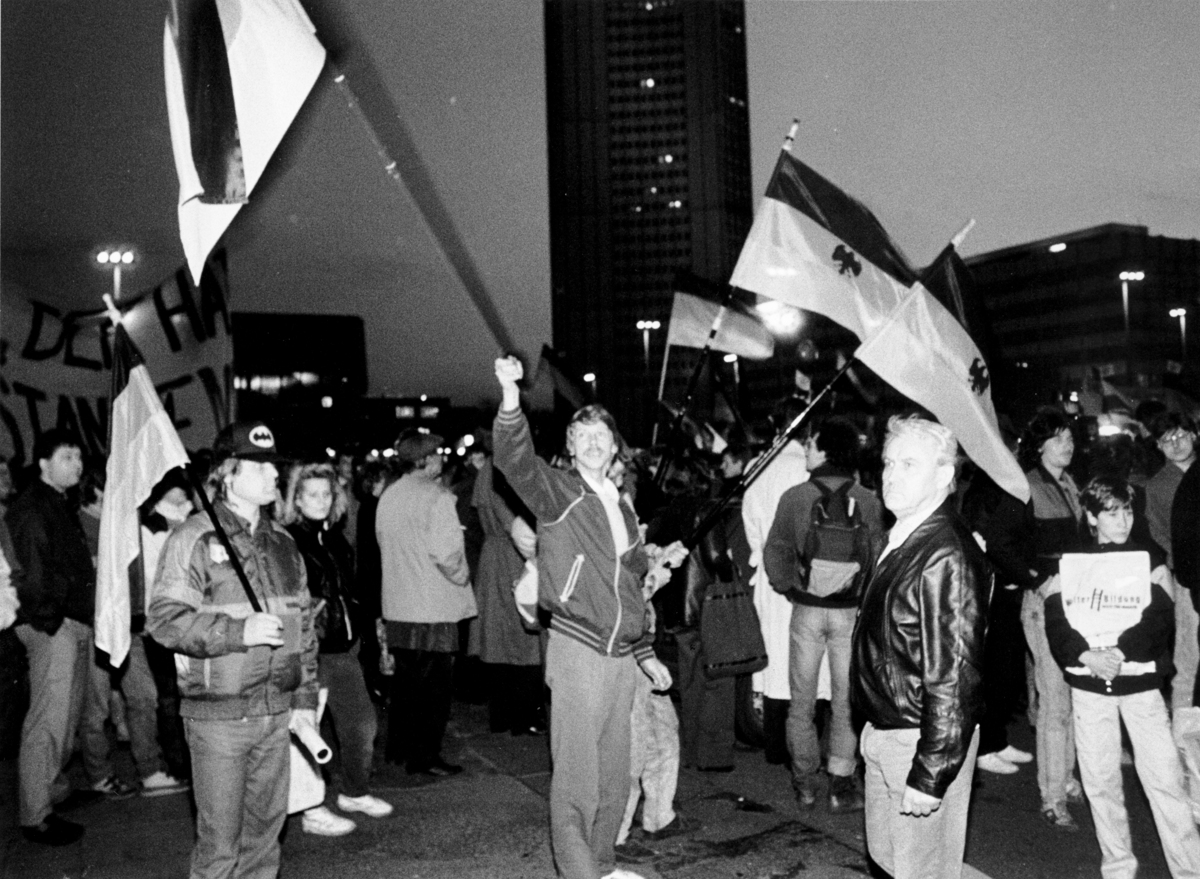Source

Source: Photo: Volker Döring.
bpk-Bildagentur, image number
30047982. For rights inquiries, please contact Art Resource at
requests@artres.com (North America) or bpk-Bildagentur at
kontakt@bpk-bildagentur.de (for all other countries).
In the 1980s, extreme right-wing thinking was more than just a West German problem. Since the beginning of the decade, extreme right-wing ideas had also been circulating among young people in the GDR. Groups of skinheads and “Faschos” – as these young fascists called themselves – vandalized Jewish cemeteries, attacked foreigners and punks, and ambushed gatherings of environmental and civil rights activists. While right-wing radicalism in East Germany seemed to resemble its West German counterpart, its roots lay in the authoritarian and totalitarian system of the GDR. According to official accounts, neither neo-fascism nor right-wing radicalism existed in the GDR. Therefore, SED rulers tried to cover up and gloss over right-wing outbursts, or they sought to blame them on harmful ideological influences coming from the West. After the political and economic collapse of the GDR, right-wing thinking gained increasing popularity in the East, particularly among the younger generation. After the opening of the border, it wasn’t long before right-wing parties from West Germany, above all the Republicans [Die Republikaner], were courting East German voters. Their efforts there met with real success. This photograph shows a group of right-wing extremists at the last of Leipzig's famous “Monday Demonstrations.” The demonstration took place on March 12, 1990, six days before the GDR Volkskammer election. Right-wing extremists had gathered behind the opera house beforehand to set fire to election fliers and advertisements for GDR parties. Photo: Volker Döring.

Source: Photo: Volker Döring.
bpk-Bildagentur, image number
30047982. For rights inquiries, please contact Art Resource at
requests@artres.com (North America) or bpk-Bildagentur at
kontakt@bpk-bildagentur.de (for all other countries).
© bpk / Volker Döring